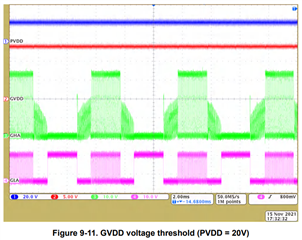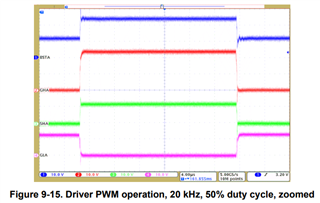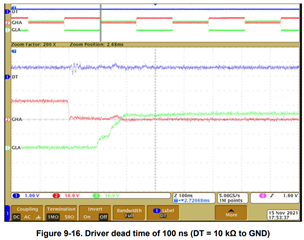Tool/software:
Dear.
I am currently working on a project where I am utilizing the DRV8328B driver to control a BLDC motor. I have chosen this particular driver for its ability to operate in 3-PWM mode, where the high-side MOSFETs are driven by PWM signals, and the low-side MOSFETs are controlled by standard ON/OFF signals.
During the testing phase, I observed that the high-side MOSFETs are not switching as expected. Although the PWM signals are correctly reaching the inputs of the DRV8328B, the outputs intended to drive the high-side MOSFETs remain low.
After researching the issue, I came across to the forum post where a similar problem was discussed. The solution suggested was to ensure that the low-side MOSFET is activated first to charge the bootstrap capacitor before attempting to switch the high-side MOSFET. This recommendation aligns with the waveforms shown in the DRV8328B datasheet, which indicate that the high-side PWM should be accompanied by a phase-shifted PWM on the low-side to facilitate the bootstrap capacitor's charging process.
To ensure I fully understand the operation, I would like to confirm if it is necessary to generate a PWM signal on the low-side MOSFET while driving the high-side MOSFET with PWM to charge the bootstrap capacitor correctly each time the high-side MOSFET is activated.






